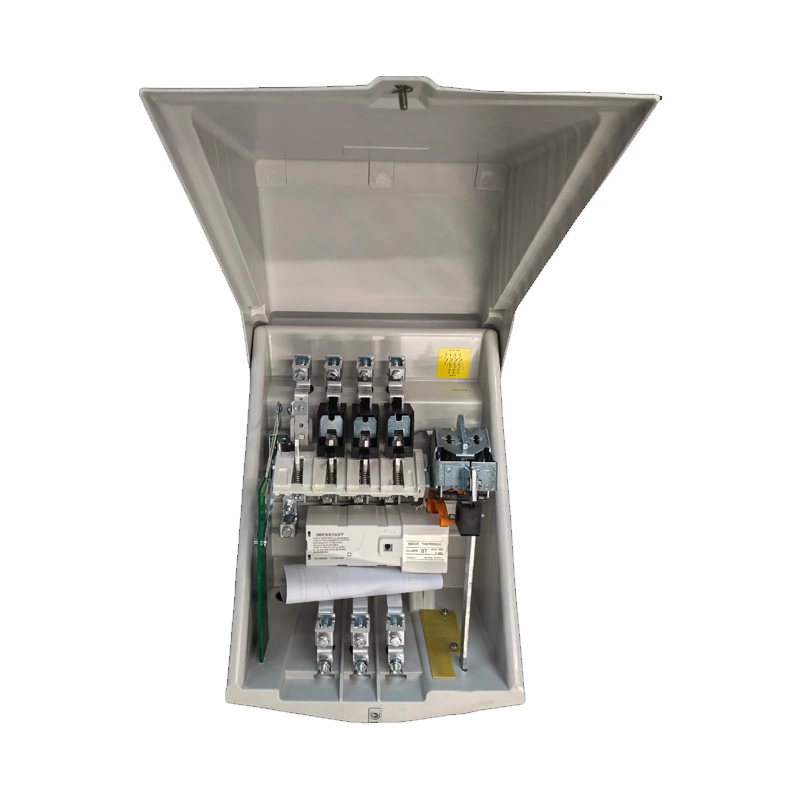Electromagnetic Operating Mechanism
2. Electromagnetic operating mechanism
The electromagnetic operating mechanism completely relies on the electromagnetic attraction generated by the closing current flowing through the closing coil to close the circuit and compress the tripping spring at the same time. When tripping, it mainly relies on the tripping spring to provide energy.
Therefore, the tripping current of this type of operating mechanism is small, but the closing current is very large, which can reach more than one hundred amperes instantly.
This is why the DC system of the substation must be divided into the closing bus and the control bus. The closing bus provides the closing power supply, and the control bus supplies power to the control circuit.
The closing bus is directly hung on the battery pack. The closing bus voltage is the battery pack voltage (generally around 240V). When closing, it uses the battery discharge effect to instantly provide a large current. At the same time, the voltage drops sharply when closing. The control bus is connected to the closing bus through silicon chain voltage reduction (generally controlled at 220V), and the stability of the control bus voltage will not be affected when closing. Because the closing current of the electromagnetic operating mechanism is very large, the protection closing circuit is not directly connected to the closing coil, but to the closing contactor. The tripping circuit is directly connected to the tripping coil.
The closing contactor coil is generally voltage type, with a large resistance (usually several K). When the protection is coordinated with this circuit, it should be noted that the closing hold cannot be started. But this problem is not big, the trip hold TBJ can generally be started, so the anti-trip function still exists. This type of mechanism has a long closing time (120ms~200ms) and a short opening time (60~80ms).
3. Spring operating mechanism
This type of mechanism is the most commonly used mechanism at present. Its closing and opening rely on springs to provide energy. The tripping closing coil only provides energy to pull out the positioning pin of the spring, so the tripping closing current is generally not large. The spring energy storage is compressed by the energy storage motor to store energy.
For the spring operating mechanism, the closing busbar mainly supplies power to the energy storage motor, and the current is not large, so the difference between closing the busbar and controlling the busbar is not large. When the protection is coordinated with it, there is generally nothing special to pay attention to.
4. Permanent magnet operating mechanism
The permanent magnet operating mechanism is a new mechanism that ABB has recently applied to the domestic market. It was first applied to its VM1 type 10kVLow voltage pole mounted circuit breaker.
Its principle is roughly similar to that of the electromagnetic type. The active shaft is made of permanent magnetic material, and there is an electromagnetic coil around the permanent magnet.
Under normal circumstances, the electromagnetic coil is not energized. When the switch is to be opened or closed, the polarity of the coil is changed to use the principle of magnetic attraction or repulsion to drive the opening or closing.
Although this current is not small, the switch is "energy storage" through a large-capacity capacitor, and the action is to provide a large current through capacitor discharge.
The advantages of this mechanism are small size and fewer transmission mechanical parts, so the reliability is better than that of the elastic operating mechanism.
In conjunction with our protection device, our tripping and closing circuit drives a high-resistance solid-state relay, which actually only requires us to provide it with an action pulse.
Therefore, for this switch, the holding circuit will definitely not start, and the protection anti-trip will not start (the mechanism itself has anti-trip).
However, one thing to note is that because the operating voltage of the solid-state relay is relatively high, the conventional design of TW negative and the closing circuit connected together will not cause the solid-state relay to operate, but it is possible that the position relay cannot be started due to too much voltage division.
This situation has been encountered on site. The specific analysis and processing process can be seen in the debugging case part of this article, which is described in detail.
There are also products with permanent magnetic operating mechanisms in China, but the quality has not been very good in the past. After the quality has been improved in recent years, they have gradually been introduced to the market. Because of cost considerations, domestic permanent magnetic mechanisms are generally not equipped with capacitors, and the current is directly provided by the closing busbar.
Our operating mechanism drives the closing and opening contactor (generally current type), and the holding and anti-jumping can generally be started.

